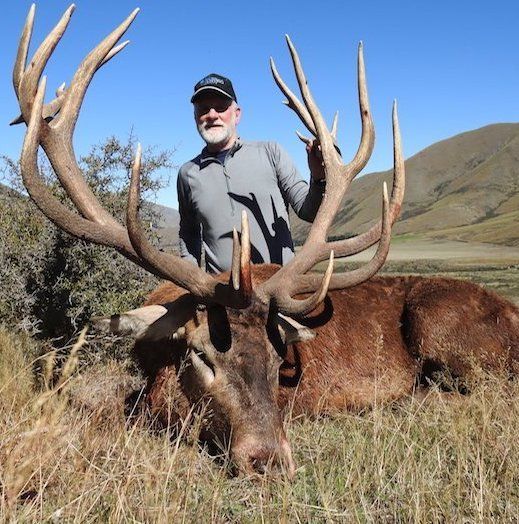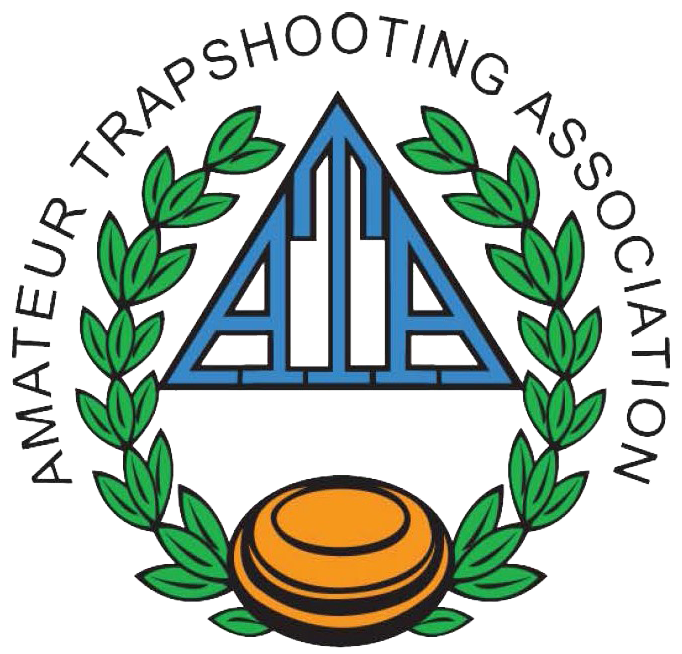Hunting
Hunting
With years of experience in the hunting industry we offer the very best hunting in New Zealand. We manage our own private land hunting and have exclusive
access to all our hunting properties

Red deer (cervus elaphus)
Red Deer were first liberated by the Canterbury Society in 1897. 9 deer founded the Famous ‘Rakaia herd”. Between 1897-1919 the first record heads were 48.5 inches length, another 46 3/6 inch spread and 24 points. In 1919 a Mr Barber of Wellington shot a Red Stag with a record 50 inches of main beam. Through careful management of numbers, food, and in partnership with the landowners our private free-range herds today are on the increase in quality of trophy heads (10-18 points average). On game estates also exceptionally large trophies of 18-40+ points (s.c.i 350-600+) are being harvested. Red Deer can be found from river valleys and native timber to the open high country tops. Weighing up to 450 lbs, and of reddish in appearance Stags (males) and Hinds (females) come together during the rut (roar) between late March-end of April.
Himalayan Tahr (hemitragus jemlahicus)
5 Himalayan Tahr were first liberated in 1904 at Mt cook. Of goat like appearance the Tahr are infact their own sub-species and can weigh in excess of 300 lbs. Now thriving on the central South Islands hills and mountains between 3500-7000 feet the Bull (male) Tahr develop their winter coats from mid April and carry them through till October. The nannies (females) come into season from late May, and with two properties of over 35,000 acres of private hunting in the heart of Tahr country we are able to glass them from the river valleys. Preferring rocky mountain outcrops till the rut trophy Bulls are sought after for their capes and horns (11-14 inches) and the experience of a truly affordable mountain hunt to rival that of any other species.
Chamois(rupicarpra rupicarpra)
As a gift from Austrian Emperor Franz Joseph, the first Chamois were liberated in 1907 again in the South Island’s Mt Cook region. Chamois are a mountain Antelope that are found in smaller family groups unlike Tahr. Weighing around 90 lbs they are extremely agile and alert animals with a playful and unpredictable nature. They can be found from river valleys to rocky peaks at a generally lower altitude than Tahr. New Zealand Safaris has 3 private Chamois hunting properties with exceptional numbers and quality. Bucks and does have nearly identical features with horn length from 8-11 inches.
Fallow Deer (dama dama)
The first introduction of the beautiful Fallow Deer was in the South Island in 1864, 25 liberations were subsequently made. From these small herds they now thrive in pockets throughout. At around 170-240 lbs their spotted coats range from Black, white, and the more common menil. Palmation like a moose the cunning Fallow Bucks are an excellent hunt, and venison that will make ones mouth water! The rut (croak) overlaps that of the Red Stag around mid April and is an amazing experience to here the two deer species challenging their rivals. Trophies are measured by palmation, points, length and spread and free ranging can rival that of estate deer.
Sika Deer (cervus nippon)
Gifted to the NZ government in 1904 by the Duke of Bedford six deer were released into the central North Islands Kaimanawa Ranges. Sika deer have a red/orange coloured coat, with a large white rump. Known to be one of the most cunning deer in New Zealand they inhabit native Manuka and bush, venturing out in the mornings and evenings. Antlers are typically 4x4 in formation. Our private hunting property is situated in the foothills of the Ruapahu ski field, and holds exceptional trophy Stags. With patience and skill you will be rewarded with one of the most memorable trophies of your career. The Sika rut coincides with the Red and Fallow deer Rut during April.
Sambar (cervus unicolor unicolor)
Sambar deer like the Rusa originated from India, and arrived in 1875 to the central North Island. There are only 2 free ranging herds left today, one being on our private property below Rotorua. The largest of the deer species the Sambar spend much of their time in dense native timber, appearing like ghosts when the sunlight hits the openings in the morning and evenings. Typical trophy heads are heavy timbered 3x3. These huge 700 lbs deer rut in the months of May and August.
Rusa (cervus timorensis)
Similar to the Sambar these unique deer also originated from India since their introduction in 1908. They inhabit bush-clad hills on the North Islands east coast. Stags can weigh up to 400 lbs, and will be found sunning themselves in the mornings down on riverbanks and fields. With a unique roar during the rut (July-August) Rusa are renowned for their aggressive behaviour, and during this time it is common to watch rival Stags fight for Hinds.
Whitetail Deer (odocoileus virginianus)
New Zealand Whitetail deer were introduced from the U.S State of New Hampshire to Stewart Island in 1905. The small elusive deer unlike its relations in North America has never breed in large numbers, and are only present in small numbers in the South Island. The rut is in May and has a short hunting season, as the Bucks antlers are only hard from March-July.
Elk (cervus elaphus nelsonii)
President Roosevelt gifted elk or more commonly called Wapiti in New Zealand in 1909 where 20 animals were released in the South Islands George sound in Fiordland. The largest of our game animals they are predominately found on private estates now producing exceptionally large antlers due to selective breeding and grasses. The rut (bulge) also coincides many of the deer species in April.
Arapawa Ram (ovis aries)
This breed of wild sheep was introduced in 1867 to Arapawa Island at the top of New Zealand’s South Island. Descendants of the Merino sheep there characteristic black wool, white blaze nose, and spiralling horns will curl from 1 ½- 2 ½ turns. Hunting can be year round although they do shed some of their wool in the warmer months.
Alpine Goat (capra hircus)
Brought over by the early settlers in the early 1800`s the Goat has now become widespread throughout the country. Weighing 80-120 lbs they inhabit rocks and hills similar to a Tahr where large numbers can be found, coming in a variety of colours and horns a big Billy will have 25+ inches per side in length.
Boar (sus scrofa)
Highly by New Zealand hunters, Boar hunting with dogs is fast paced and exciting. The most known release was by Captain James Cook in the 1770`s, as well as other pioneers as a food source. Today they thrive throughout, ranging from fields to hills we measure the size of the lower tusk from 3 inches+. It’s a real prize and test of hunter’s endurance.
Wing shooting- Paradise duck (putangitangi), Pheasant, Mallard, Swan, Goose, and Pukeko
The South Island has 14 bird species to hunt. Around the 1860`s the acclimation society played a major role of importing and managing game birds. With bag limits varying from 2-25 per hunter per day this is a paradise for mixed bag wing shooting. The main bird season is the first weekend in May –July but there is a short early season in March.
The Common Pheasant was introduced from Britain in 1842, and the most successful in our area in 1868. Shooting is also available in our area from April- August on a neighbouring game preserve with high bag limit and some chuker and quail. A must for the avid upland game shooter during the course of your hunt.
Merrium`s Turkey were introduced in the 1890`s as a food source for settlers, and today they are found in small pockets throughout New Zealand. New Zealand Safaris would have one of the largest populations and with unlimited bag limits and skill of a hunter you will go home with some huge birds.
Varmints- Wallaby (macropus rufogriseus), Possum, Rabbit, Hare
Captain Thomson brought over the Red Neck Wallaby in 1870 to Waimate in the central South Island, 2 female, 1 male. With the lack of predators and abundance of food has meant today there are huge populations in our South Canterbury district. Smaller than their cousin the Kangaroo (30-40 pounds) they stand around 45 inches tall. We have some absolute amazing hunting which can require large amounts of ammunition for all ages. Possum, rabbit, and Hare hunting at night are also great fun. Introduced around 1837 also from Australia for food and fur numbers have also flourished.
Australia
Water Buffalo- Since their introduction into the Northern Territories Outback between 1824-1849, thousands of Buffalo are now found throughout. At up to 2000 lbs these huge animals found in the largest numbers in wildest parts of the Aboriginal grounds of Arnhem land. With sweeping horns that can measure out to 122 inches vehicle and foot conduct from tip to tip hunting them. Since 1982 this concession has been held that encompasses over 2.1 million acres, with no cattle ranches, shops, or passes by this is the real, wild, outback experience that many hunters are today searching for! Camp is made up of two permanent building, with running water, shower, and flushing toilet and over looks the Walker River that holds Australia’s largest Crocodiles and Barramundi fishing.
Rusa, Sambar, Axis deer and Blackbuck. - Situated on Marble Island on the East Coast of Australia this privately owned Paradise holds the largest deer species in the South Pacific including many Rusa deer world records. Chartering a flight into this amazing piece of coastal land is what tropical free-range hunting is all about.

“I want to give a huge shout out to the most amazing guides I ever had the pleasure of hunting with. Health, Ben and Tom made this hunt of a life time a memory that will stand out for the rest of my life. ”
Elliot Kadow, Wisconsin, USA
“I would like to thanks you for one Phenomenal trip and hunt!! Heath, Ben & Tom are one of the most hard working guides I have had the pleasure to Hunt with! "”
Steve Rudesill, USA
“ highly recommend New Zealand Adventures to every hunter I encounter (top of bucket list). Best hunt ever, great accommodations, new friends"”
Steve Beres, Wisconsin, USA
Thank you for contacting us.
We will get back to you as soon as possible
We will get back to you as soon as possible
Oops, there was an error sending your message.
Please try again later
Please try again later
Book Your Adventure Now



About us
Your opportunity to hunt in New Zealand and enjoy the great outdoors in our amazing country
Useful Links
Contact info
0064 27 288 9259
heath@newzealandhuntingadventures.com
682 Saunders Rd,
Hororata, New Zealand
heath@newzealandhuntingadventures.com
682 Saunders Rd,
Hororata, New Zealand
Hororata, New Zealand
Join our Newsletter
Contact Us
Thank you for contacting us.
We will get back to you as soon as possible
We will get back to you as soon as possible
Oops, there was an error sending your message.
Please try again later
Please try again later
© 2024
New Zealand Hunting Adventures⼁Site by Mt Hutt Digital
